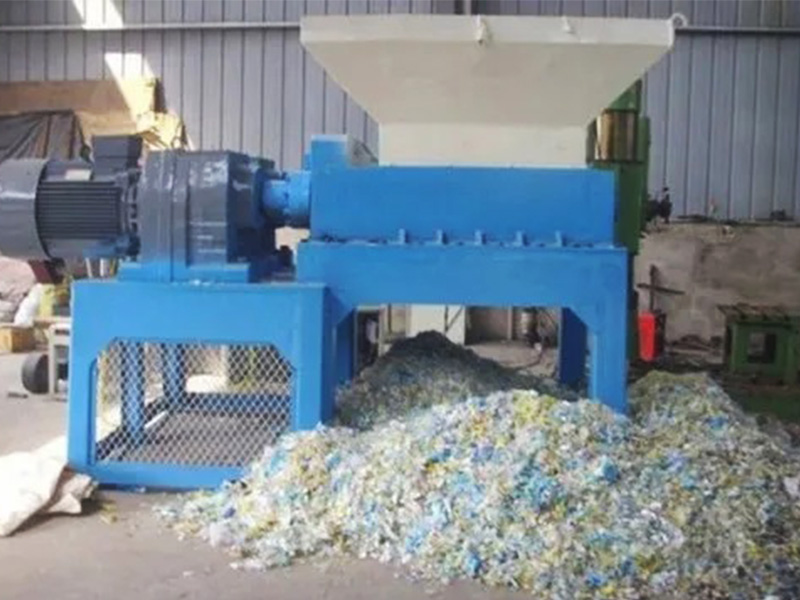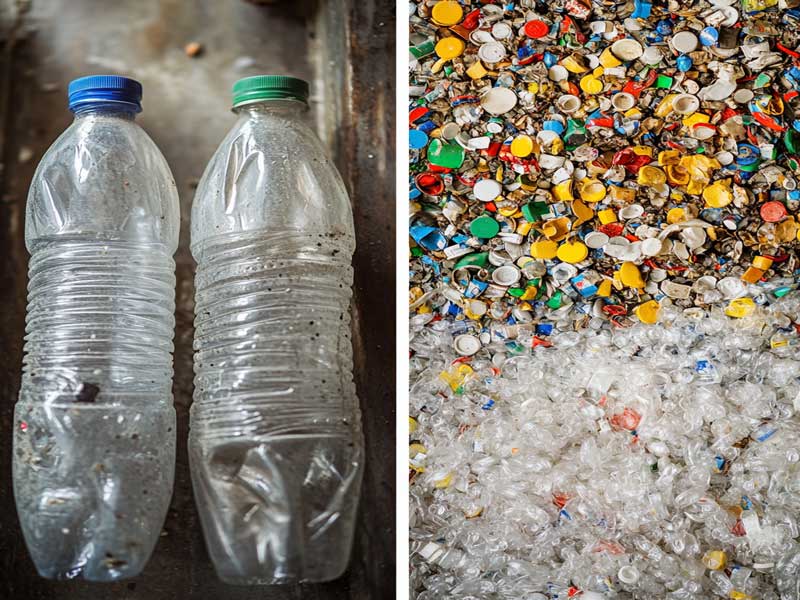Selecting a proper plastic granulator is a vital investment in the plastic recycling and industry sectors. Higher output efficiency, less waste, and a consistent particle size for the following processing are all features that will be realized from a granulator of high-quality granulator. With so many models and functions, yet, how will you pick what one is ideal? The article presents key factors to consider prior to deciding on an investment, explores various product types, and points out the advantages of using plastic granulators.
Keypoints- The appropriate granulator model is determined by the type of plastic material being processed. Rigid plastics required heavy-duty equipment, while soft plastics required specialized cutting systems.
- Granulator selection should be based on production capacity requirements; high-volume operations indicate staying with larger machines with stronger motors and continuous feeding capability.
- Since granule size specifications become crucial while different processes downstream require different particle sizes that adjustable screen systems can provide.
- Initial costs should be managed with long-term operational expenses for the budget, as granulators of higher quality typically offer more energy savings and lower maintenance costs.
- When choosing a granulator size, you need to consider the size of the workspace, which determines which one to use; smaller ones are better suited to limited workspaces.
- Multiple kinds of granulation machines have been built for different purposes, with twin-screw equipment being best suited for mixed polymer compounds, while strand pelletizers can create more uniform granules.
- To ensure the most effective long-term performance and compliance, one needs to consider additional factors such as maintenance accessibility, spare part availability, and safety certifications.
5 Factors to Consider Before Investment

What materials will you be processing?
Different plastic granulators handle different materials. While a few are suitable for softer plastics like LDPE films or expanded foams, others are great for hard, rigid plastics such as PET, PVC, or ABS. Finding the wrong kind of machine for your material could lead to even worse cutting performance, further wear, or even machine damage. Before selecting a model, then, it's vital that you precisely record what kinds of plastic waste you are going to be recycling. Before selecting a model, then, it's vital that you precisely record what kinds of plastic waste you are going to be recycling.
Determine the material
Common Plastics: PP, PE, PET, ABS, PVC, PS
Form of Input Material:
Soft plastics (films, bags) → Require special cutting systems
Rigid plastics (bottles, containers) → Need heavy-duty granulators
Mixed/recycled plastics → Twin-screw granulators work best
Example: If you’re recycling PET bottles, a high-speed granulator with a washing line may be necessary.
What is your required output capacity?
The size and motor power of the granulator will rely on the everyday or per-hour consumption of plastic you need to manage. Would your production refer to for stable operation or high throughput, you need a heavy-duty machine that has a larger hopper capacity and improved cutting ability. In smaller operations or batch processing, a small granulator might be a lot. Matching the capacity of the machine with your truthful workload ensures efficiency and helps prevent overloading.
What is the desired granule size?
It is important to note that when producing plastic granules that the size will affect the use of your subsequent processes, such as injection molding and extrusion. Look for a machine, such as adjustable screens or blade,s to customize the output size if your ultimate purpose requires uniform and small particles. Personalizing this value not only improves the quality of your recycled material but also raises its value and reusability.
What is your budget?
It's easy to opt for the most economical choice, but one should think about one's future. Energy-consuming, regular service, and unexpected downtime could add up to extra funds spent on a cheaper granulator. On the contrary, over time, a bit more upfront investment in a reliable, energy-efficient, low-maintenance machine can save significant operating costs. Plan your investment considering future earnings as well as short-term affordability.
Do you have space constraints?
In fact, there are several sizes of plastic granulators, so you ought to take seriously the factory floor area you have at hand. If the production area is tiny, a compact or side-by-side press form will fit better. Further region is usually needed for larger recycling machines for feeding systems, cleaning access, safety zones, and installation, in addition to creating ahead of time arrangements ensures a safer working environment and an improved installation.
Choose the Right Types of Plastic Granulators
Plastic granulators come in several forms, each aimed at specific purposes and production settings. Learning the differences will let you pick the machine that best fits your output goals and workflow. Here are some common kinds you could come delivered:
| Type | Best For | Pros | Cons |
| Single-Screw Granulator | Homogeneous plastics | Low cost, easy maintenance | Limited mixing ability |
| Twin-Screw Granulator | Mixed or contaminated plastics | Better mixing, higher output | More expensive |
| Strand Pelletizer | High-precision pellets | Uniform pellet size | Slower processing |
| Underwater Pelletizer | High-speed production | Fast cooling, smooth pellets | High maintenance cost |

Benefits of Using a Plastic Granulator
Getting a plastic granulator isn't just an effective method for dealing with waste; it can also benefit your production line in various other capacities. Many manufacturers find them to be essential resources for this justification:
√ Reduced Waste
Granulators greatly decrease a lot of plastic waste by enabling you to recycle, producing debris, offcuts, and rejected products.
√ Material Savings
Reusing regrind material helps to reduce demand for virgin plastics, consequently directly lowering the price of production.
√ Improved Efficiency
Plastic recycling at the source, computerized, saves time, improves logistics, and improves the overall output of your business.
Key Advantages of an Efficient Granulator
The particles are not built similarly. Choosing a superior machine provides several benefits that go beyond easy utility. Here are some known advantages:
Consistent Granule Quality
Advanced granulators offer uniform particle size and minimal dust, ensuring high-quality recycled material that can be reused without compromising product standards.
Lower Energy Consumption
Built with energy and the economy in mind, modern granulators help you less running costs and boost sustainability.
Quiet and Safe Operation
Modern machines anxiety operator comfort and safety via improved noise insulation, safety locks, and user-friendly designs.user-friendly designs.
Other Important Considerations
In addition to some of the features and functions described above, the following factors need to be considered during use to help you get the best machine performance and extend equipment life.
Ease of Maintenance
Over the years, an easily sterilized and looked-after granulator will save you labor and time. Search for models with removable parts and quick-access panels.
After-Sales Support and Spare Parts
Avoiding extended downtime needs a supplier with swift customer care and easily available spare parts.
Compliance and Safety Standards
Especially if you are exporting goods or working in regulated regions, be sure the machine satisfies relevant industry and safety standards.
Conclusion
It is inadequate to simply choose a machine from the catalog when it comes to selecting the right plastic granulator. It involves understanding your long-term efficiency needs, materials, and production goals. Reviewing machine types, capacities, and benefits alongside cost-effectiveness and safety can help you reach a smart investment in a plastic granulator that truly helps your company succeed.
The correct plastic granulator is an appropriate choice in front of whether your manufacturing line has to be improved, costs need to be reduced, or the recycling operation needs improvement.
FAQs
1. What is a plastic granulator?
Plastic granulators process plastic waste into smaller pieces for recycling or production.
2: What materials can plastic granulators process?
Plastics such as PET, PE, PP, PVC, ABS, and others can be processed by them. They are able to treat both rigid and flexible forms of plastics.
3: How do I choose the right granulator size?
Choose based on available space, material kind, and daily output needs. Greater operations call for highly capable granulators.
4: Are granulators energy efficient?
In fact, many modern granulators are made to be modest in power yet offer great cutting performance.
5: What's the difference between central and beside-the-press granulators?
While side-by---the-press granulators are smaller and used next to production machines, central granulators manage huge quantities in one place.
6: How often does a plastic granulator need maintenance?
While use decides maintenance, regular cleaning, blade sharpening, and part testing help to keep it employed as intended.







